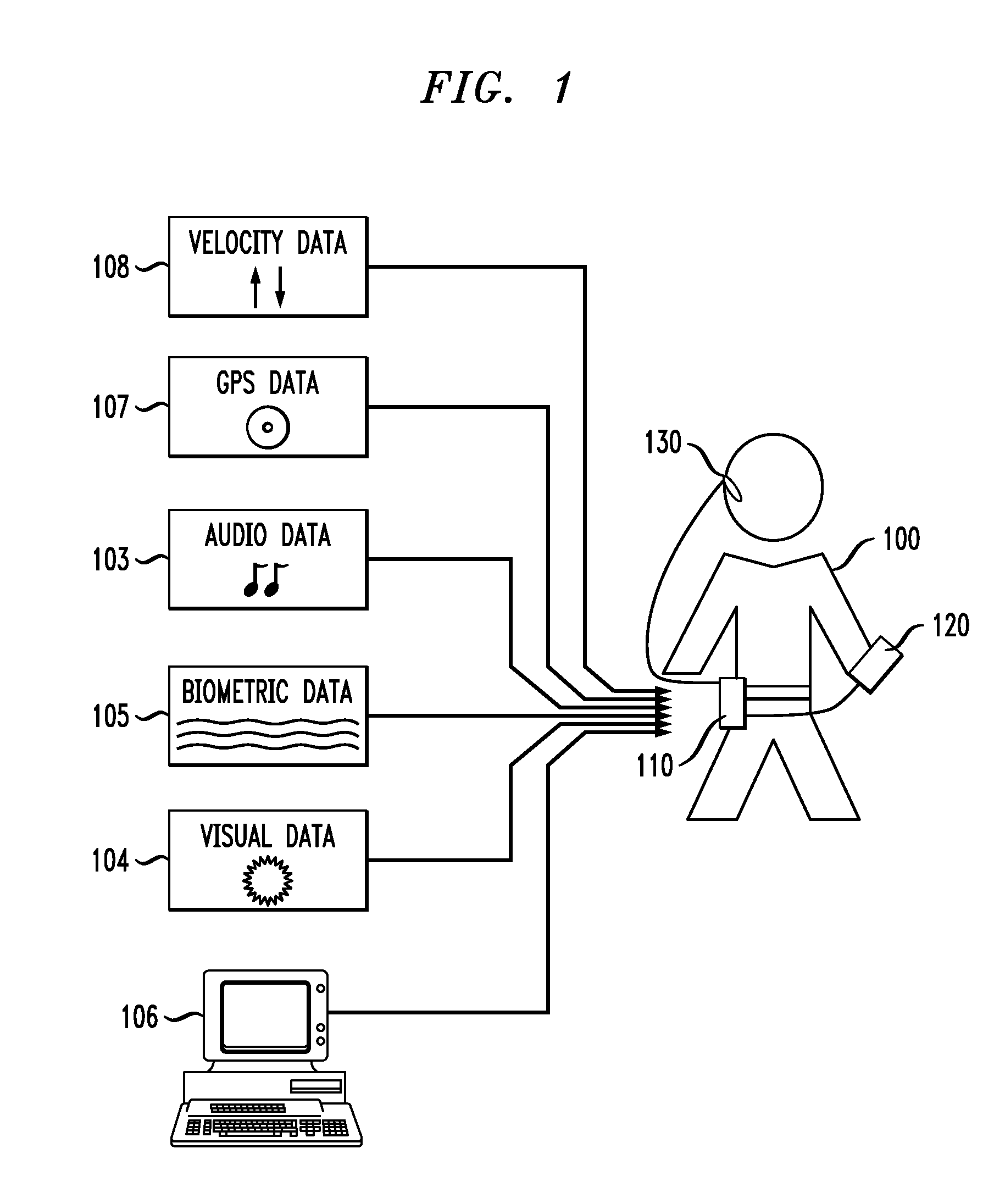Context-sensitive language learning
a technology of context and language learning, applied in the field of computer-assisted language learning, can solve the problems of not providing contextual or cultural background, pocket translators are not interactive, and current tell and call technologies lack the ability to give learners an opportunity
- Summary
- Abstract
- Description
- Claims
- Application Information
AI Technical Summary
Benefits of technology
Problems solved by technology
Method used
Image
Examples
Embodiment Construction
[0023]FIG. 1 shows a context-sensitive language learning system and exemplary inputs thereto, according to an embodiment of an invention. In this illustrative embodiment, user 100 wears context-sensitive language learning system 110. This language learning system is able to incorporate contextual cues to both provide culturally-sensitive examples to the user and to adjust the pace of the instruction to account for the user's current attention level. As an example of the former, if the system detects that the user is riding a bicycle, it may choose to converse with the user regarding outdoor sports and activities. Furthermore, if the user is learning French and it is temporally appropriate, the system may ask the user questions about the Tour de France. On the other hand, the system may notice that the user is distracted (e.g. the user is engaging in another mentally taxing activity) and may therefore choose to ask fewer questions than it would otherwise. By combining increased aware...
PUM
 Login to View More
Login to View More Abstract
Description
Claims
Application Information
 Login to View More
Login to View More - R&D
- Intellectual Property
- Life Sciences
- Materials
- Tech Scout
- Unparalleled Data Quality
- Higher Quality Content
- 60% Fewer Hallucinations
Browse by: Latest US Patents, China's latest patents, Technical Efficacy Thesaurus, Application Domain, Technology Topic, Popular Technical Reports.
© 2025 PatSnap. All rights reserved.Legal|Privacy policy|Modern Slavery Act Transparency Statement|Sitemap|About US| Contact US: help@patsnap.com



